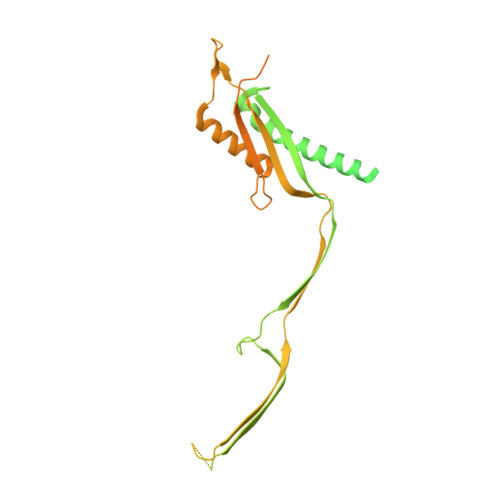Cryo-EM structure of the MS ring (C34) within the flagellar motor-hook complex in the CCW state
Tan, J.X., Zhang, L., Zhou, Y., Zhu, Y.Q.To be published.
Experimental Data Snapshot
Starting Model: in silico
View more details
wwPDB Validation 3D Report Full Report
Entity ID: 1 | |||||
|---|---|---|---|---|---|
| Molecule | Chains | Sequence Length | Organism | Details | Image |
| Flagellar M-ring protein | 560 | Salmonella enterica subsp. enterica serovar Typhimurium str. LT2 | Mutation(s): 0 |  | |
UniProt | |||||
Find proteins for P15928 (Salmonella typhimurium (strain LT2 / SGSC1412 / ATCC 700720)) Explore P15928 Go to UniProtKB: P15928 | |||||
Entity Groups | |||||
| Sequence Clusters | 30% Identity50% Identity70% Identity90% Identity95% Identity100% Identity | ||||
| UniProt Group | P15928 | ||||
Sequence AnnotationsExpand | |||||
| |||||
| Task | Software Package | Version |
|---|---|---|
| RECONSTRUCTION | cryoSPARC | 4.1.1 |
| MODEL REFINEMENT | PHENIX | 1.20.1_4487: |
| Funding Organization | Location | Grant Number |
|---|---|---|
| National Natural Science Foundation of China (NSFC) | China | 81925024 |
| National Natural Science Foundation of China (NSFC) | China | U23A20163 |
| Ministry of Science and Technology (MoST, China) | China | 2017YFA0503900 |